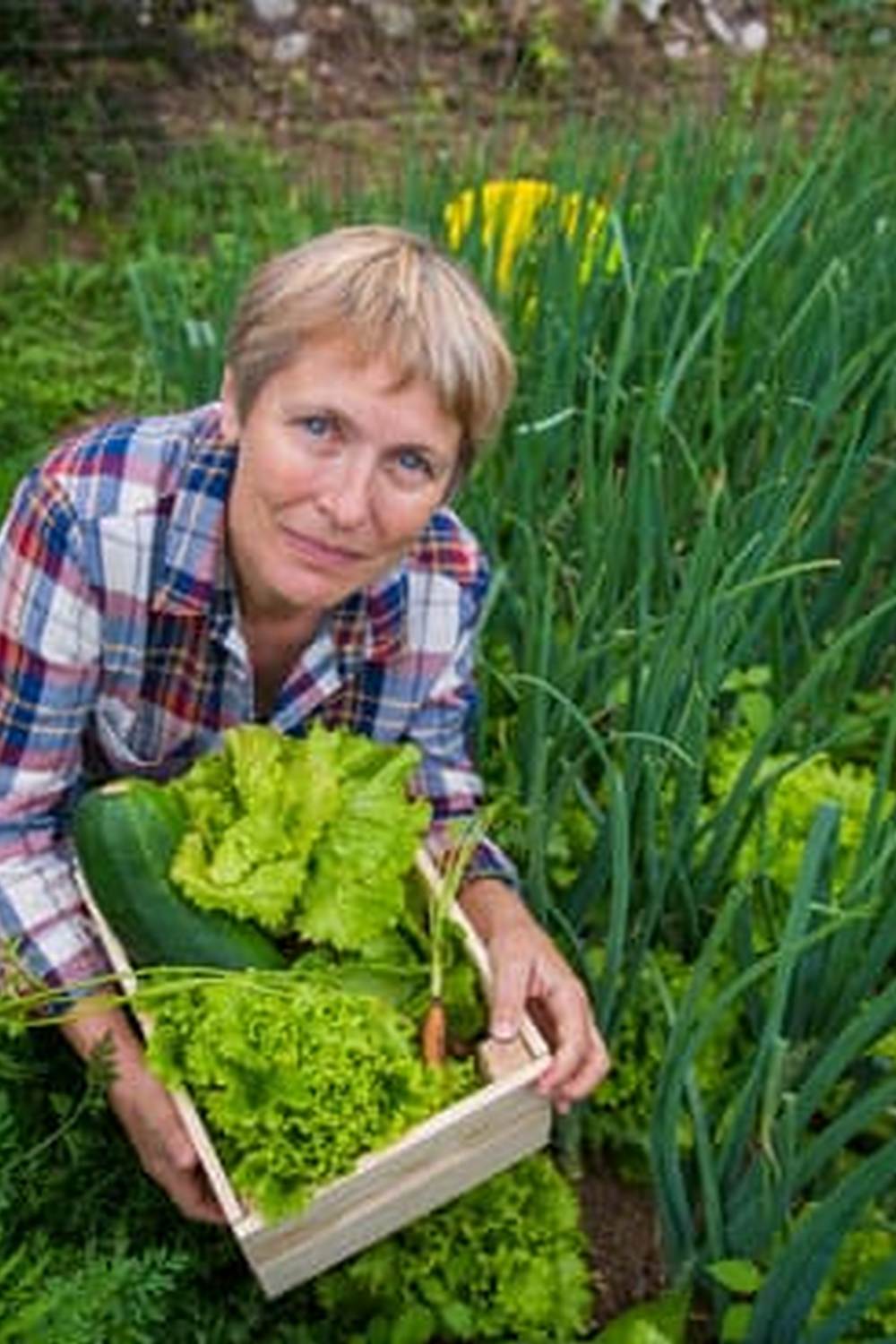Milorganite, a popular organic fertilizer, is gaining attention for its potential benefits in vegetable gardens. Gardeners often wonder, “Can Milorganite be used in vegetable gardens?” This article will delve into the world of Milorganite and explore its role in enhancing garden soil for optimal plant growth.
Derived from treated sewage sludge, Milorganite is known for being a sustainable and eco-friendly fertilizer. Its slow-release formula provides essential nutrients to plants over an extended period, promoting healthy root development and overall plant growth. With an abundance of nutrients like nitrogen, phosphorus, and potassium, Milorganite offers a balanced approach to feeding vegetable plants.
In this article, we will explore how Milorganite is produced and the specific nutrients it contains that benefit vegetable plants. Additionally, we will address the advantages and potential risks of using Milorganite in vegetable gardens. If you’re considering incorporating this organic fertilizer into your gardening routine, stay tuned for a comprehensive guide on application techniques and tips for maximizing its effectiveness.
What Is Milorganite and How Is It Made?
Milorganite is a natural fertilizer made from heat-dried microbes that have digested organic material. It is a byproduct of the wastewater treatment process, where organic matter in sewage is broken down by bacteria into simple compounds. These compounds are then absorbed by the microbes, which are harvested and dried to create Milorganite. This unique manufacturing process makes Milorganite an environmentally friendly fertilizer option for gardeners.
Here are some key points about what Milorganite is and how it is made:
- Milorganite is made from anaerobically digested municipal sewage sludge that has been heat-dried to eliminate pathogens and weed seeds.
- The nutrients present in Milorganite, such as nitrogen, phosphorus, and potassium, are derived from the organic material processed during wastewater treatment.
- Milorganite undergoes rigorous quality control measures to ensure that it meets strict standards for heavy metals content, making it safe for use in vegetable gardens.
Overall, the production of Milorganite provides a sustainable solution for recycling nutrients back into the soil while also diverting waste from landfills. Its unique manufacturing process sets it apart as an eco-friendly option for gardeners looking to enhance their soil health and promote plant growth. When considering whether Milorganite can be used in vegetable gardens, understanding its origins and nutrient composition can help make an informed decision on incorporating this fertilizer into your gardening routine.
Understanding the Nutrients Present in Milorganite and How They Benefit Vegetable Plants
Milorganite is composed of nutrients that are beneficial for vegetable plants, promoting healthy growth and abundant harvests. Understanding the nutrients present in Milorganite can help gardeners make informed decisions about its use in their vegetable gardens.
Here are the key nutrients found in Milorganite and how they benefit vegetable plants:
- Nitrogen: Nitrogen is crucial for promoting leafy growth in vegetables. It helps plants develop vibrant green leaves, a vital component for photosynthesis. Milorganite contains a significant amount of slow-release nitrogen, providing a steady supply to the plants over time.
- Phosphorus: Phosphorus plays a critical role in root development and overall plant vigor. It helps vegetables establish strong root systems, resulting in better nutrient absorption and water uptake. Milorganite contains phosphorus that can support healthy root growth in vegetable plants.
- Potassium: Potassium is essential for fruit development and overall plant health. It aids in disease resistance, stress tolerance, and improving the quality of fruits produced by vegetable plants. Milorganite includes potassium that can help enhance the flavor and appearance of harvested vegetables.
Incorporating Milorganite into vegetable gardens can provide a well-rounded source of essential nutrients for plant growth. The slow-release nature of these nutrients ensures that vegetables receive a consistent supply over time, supporting their development from seedling to harvest. Gardeners who are looking to boost the health and productivity of their vegetable plants can Milorganite be used in vegetable gardens with confidence knowing that its nutrient content aligns with the needs of these crops.
Can Milorganite Be Used in Vegetable Gardens
Milorganite, a popular organic fertilizer, is often touted for its benefits in improving garden soil health and promoting plant growth. But can Milorganite be used in vegetable gardens as well? The answer is yes. In fact, many vegetable gardeners have found great success using Milorganite to enhance the growth and yield of their crops.
Benefits of Using Milorganite in Vegetable Gardens
One of the main benefits of using Milorganite in vegetable gardens is its high nutrient content. Milorganite is rich in essential nutrients such as nitrogen, phosphorus, and potassium, which are crucial for healthy plant growth. These nutrients are released slowly over time, providing a steady supply to your vegetable plants without the risk of burning them with excessive fertilization. Additionally, Milorganite also contains other micronutrients like iron and calcium that are essential for overall plant health.
Another advantage of using Milorganite in vegetable gardens is its organic nature. Unlike synthetic fertilizers that may contain harmful chemicals, Milorganite is made from recycled organics, making it safe for use in growing edible crops. This means that you can enjoy your homegrown vegetables without worrying about chemical residues or harmful effects on your health.
Risks of Using Milorganite in Vegetable Gardens
While there are numerous benefits to using Milorganite in vegetable gardens, it’s important to be aware of some potential risks as well. One concern with using Milorganite is the possibility of heavy metal contamination. Although rare, there have been instances where trace amounts of heavy metals like arsenic have been detected in Milorganite due to its recycled origins. To mitigate this risk, it’s recommended to use Milorganite according to the manufacturer’s guidelines and avoid overapplication.
Despite this potential risk, many vegetable gardeners continue to use Milorganite successfully in their gardens by following proper application practices and monitoring their plants for any signs of stress or nutrient imbalances. By weighing the benefits against the risks and taking appropriate precautions, utilizing Milorganite can indeed be a valuable addition to your vegetable gardening routine.
Step-by-Step Guide on How to Properly Apply Milorganite in a Vegetable Garden
Milorganite, a type of organic fertilizer made from heat-dried microbes that have digested the nutrients in wastewater, is known for its benefits in enriching garden soil. The nutrient-rich composition of Milorganite includes essential elements such as nitrogen, phosphorus, and potassium, making it a valuable amendment for vegetable gardens. But can Milorganite be used in vegetable gardens effectively?
The answer is yes. Milorganite can indeed be used in vegetable gardens to promote healthy plant growth and bountiful harvests. Its slow-release formula provides a consistent supply of nutrients to plants over time, reducing the risk of nutrient leaching and ensuring steady growth. Additionally, Milorganite’s organic nature means it improves soil structure, promotes beneficial microbial activity, and enhances water retention – all crucial elements for successful vegetable gardening.
When it comes to applying Milorganite in a vegetable garden, proper technique is key to maximizing its benefits. Start by spreading the granules evenly over the soil surface around your vegetable plants, taking care not to let them come into direct contact with leaves or stems.
Water the area thoroughly after application to help activate the nutrients and ensure they reach the plant roots. For best results, consider applying Milorganite at the beginning of the growing season and reapplying every 6-8 weeks throughout the growing period to support continuous plant development.
| Benefit | Information |
|---|---|
| Slow-release formula | Provides consistent nutrients over time |
| Organic nature | Improves soil structure and water retention |
| Proper application | Spread evenly around plants and water thoroughly |
By following these steps and guidelines for using Milorganite in your vegetable garden, you can harness its full potential to support healthy plant growth, increased yields, and overall garden success. So go ahead and give Milorganite a try – your vegetables will thank you for it.
Tips for Maximizing the Effectiveness of Milorganite in Vegetable Gardens
Milorganite is a popular fertilizer derived from heat-dried microbes that have digested organic matter. It is rich in essential nutrients such as nitrogen, phosphorus, and potassium, making it a valuable addition to vegetable gardens. Utilizing Milorganite in vegetable gardens can lead to healthier plants, increased yields, and improved soil structure over time.
Timing of Application
One important tip for maximizing the effectiveness of Milorganite in vegetable gardens is to consider the timing of its application. It is recommended to apply Milorganite at the beginning of the growing season before planting your vegetables. This allows enough time for the nutrients in Milorganite to break down and become available to the plants as they start their growth cycle.
Proper Dosage
Another crucial aspect to consider when using Milorganite in vegetable gardens is ensuring the proper dosage. Overapplication of any fertilizer can lead to nutrient imbalances and even harm plants. Always follow the instructions on the packaging or consult with a gardening expert to determine the right amount of Milorganite to use based on your specific garden size and plant needs.
Consistent Application
Consistency is key when it comes to applying Milorganite in vegetable gardens. To maximize its effectiveness, consider applying Milorganite periodically throughout the growing season. This consistent application helps maintain a steady supply of nutrients for your vegetables as they continue to grow and develop.
Remember that organic fertilizers like Milorganite release nutrients slowly over time, promoting long-term soil health and plant growth. By following these tips, you can ensure that Milorganite effectively nourishes your vegetable garden, leading to bountiful harvests and thriving plants.
Common Misconceptions About Using Milorganite in Vegetable Gardens
Milorganite is a popular organic fertilizer that is made from heat-dried microbes and biosolids. It has been used for decades by gardeners looking to improve the quality of their soil and enhance plant growth.
One common misconception about using Milorganite in vegetable gardens is that it is not safe due to its origin as a byproduct of wastewater treatment plants. However, Milorganite undergoes a stringent treatment process that ensures it is free from harmful pathogens and heavy metals, making it safe to use in vegetable gardens.
Another misconception about Milorganite is that it contains too much nitrogen, which could potentially harm vegetable plants. In reality, Milorganite has a slow-release formula that allows nutrients to be released gradually over time, preventing the risk of nitrogen burn and ensuring a steady supply of nutrients for healthy plant growth. Additionally, the nutrient content of Milorganite, including nitrogen, phosphorus, and potassium, is balanced in a way that benefits vegetable plants without causing any negative effects.
Furthermore, some gardeners may mistakenly believe that using synthetic fertilizers is more effective than organic alternatives like Milorganite. However, organic fertilizers like Milorganite promote long-term soil health by improving its structure and increasing microbial activity. This results in strong root development and nutrient uptake by vegetable plants, leading to better overall growth and productivity. By debunking these common misconceptions about using Milorganite in vegetable gardens, gardeners can take advantage of its numerous benefits for their crops.
| Milorganite Benefits | Vegetable Plants |
|---|---|
| Promotes long-term soil health | Strong root development |
| Slow-release formula | Steady nutrient supply |
| Safe for vegetable gardens | Improved plant growth |
Real-Life Success Stories of Vegetable Gardeners Who Have Used Milorganite
In conclusion, the real-life success stories of vegetable gardeners who have used Milorganite serve as a testament to the effectiveness and benefits of this organic fertilizer in enhancing the health and productivity of vegetable gardens. These gardeners have experienced firsthand how Milorganite can significantly improve soil quality, promote plant growth, and increase yield without the use of harsh chemicals or synthetic additives.
By incorporating Milorganite into their gardening practices, they have been able to cultivate bountiful harvests of vibrant and healthy vegetables.
Furthermore, these success stories highlight how Milorganite can be seamlessly integrated into various gardening routines and practices, whether for novice or experienced gardeners. The ease of application and the long-lasting effects of Milorganite make it a popular choice among vegetable gardeners looking to sustainably nourish their plants and soil. With its balanced blend of nutrients, including nitrogen, phosphorus, and potassium, Milorganite provides a holistic approach to plant nutrition that supports overall plant health and vitality.
Overall, the shared experiences of vegetable gardeners who have used Milorganite demonstrate that this organic fertilizer is indeed a reliable and beneficial option for enriching vegetable gardens. From boosting soil fertility to promoting robust plant growth, Milorganite can be a valuable asset in achieving thriving and fruitful vegetable crops.
As more gardeners continue to explore natural and sustainable gardening practices, Milorganite stands out as a trusted ally in cultivating flourishing vegetable gardens while also caring for the environment. So yes, when it comes to enhancing your vegetable garden’s potential for success – milorganite can be used in vegetable gardens.
Frequently Asked Questions
Is Milorganite Good for Tomato Plants?
Milorganite is a popular organic fertilizer made from heat-dried microbes that can benefit tomato plants. Its slow-release nitrogen content promotes healthy growth without risk of burning the plants.
What Is the Best Fertilizer to Use on a Vegetable Garden?
The best fertilizer to use on a vegetable garden largely depends on the specific needs of the plants, but compost and well-balanced organic fertilizers are generally safe options. They provide a range of nutrients essential for healthy plant growth.
Is It Safe to Use Lawn Fertilizer on a Vegetable Garden?
Using lawn fertilizer on a vegetable garden is not recommended because it may contain high levels of nitrogen that could harm edible crops. Vegetable-specific fertilizers are formulated to meet the nutritional needs of these plants without risking contamination or excess chemicals.

If you’re looking to get into vegetable gardening, or are just looking for some tips on how to make your current garden better, then you’ve come to the right place! My name is Ethel and I have been gardening for years. In this blog, I’m going to share with you some of my best tips on how to create a successful vegetable garden.





